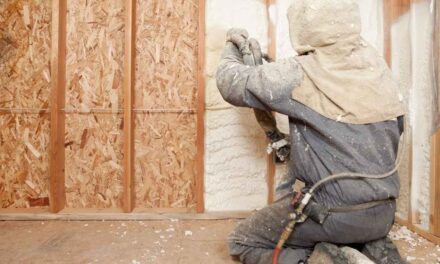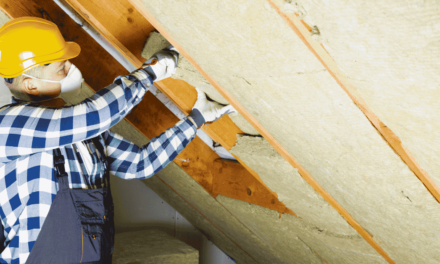Underfloor Insulation-When it comes to improving your home’s energy efficiency, underfloor insulation is often overlooked. However, for homes with suspended timber floors, it can be a game-changer. Not only does it help keep your home warmer, but it also reduces energy bills and enhances overall comfort. If you’re in the UK and considering underfloor insulation, this blog will explore its benefits, costs, and installation process to help you decide if it’s worth the investment.
What is Suspended Timber Floor Insulation?
Suspended timber floors are common in older UK homes. They consist of wooden floorboards supported by joists, with a gap between the floor and the ground below. While this design allows for ventilation, it also lets cold air seep into your home, making it harder to keep warm.
Underfloor insulation involves adding insulating material beneath the floorboards to reduce heat loss, improve energy efficiency, and create a more comfortable living environment.
The Benefits of Underfloor Insulation
1. Improved Energy Efficiency
Heat loss through uninsulated floors can account for up to 15% of a home’s total heat loss. Insulating your suspended timber floor creates a thermal barrier, reducing the amount of heat escaping and lowering your energy bills.
2. Enhanced Comfort
Cold floors can make your home feel chilly, even with the heating on. Insulation helps maintain a consistent temperature, making your living spaces more comfortable year-round.
3. Reduced Draughts
Gaps between floorboards and around skirting boards can let in cold air. Insulation helps seal these gaps, reducing draughts and improving indoor air quality.
4. Prevents Damp and Condensation
By reducing the temperature difference between the floor and the room, insulation helps prevent condensation and damp issues, which can damage your home and affect your health.
5. Increased Property Value
Energy-efficient homes are increasingly sought after in the UK. Adding underfloor insulation can boost your property’s value and make it more attractive to potential buyers.
Is Underfloor Insulation Worth the Investment?
The cost of insulating a suspended timber floor in the UK typically ranges from £50 to £75 per square metre, depending on the materials used and whether you hire a professional. While this may seem like a significant upfront cost, the long-term savings on energy bills and the increased comfort make it a worthwhile investment.
Additionally, underfloor insulation is a one-time expense that can last for decades with minimal maintenance. When combined with other energy-saving measures like loft insulation and double glazing, the benefits are even greater.
Step-by-Step Guide to Insulating a Suspended Timber Floor
Step 1: Assess Your Floor
Start by inspecting your floor to determine if it’s suitable for insulation. Check for signs of damp, rot, or pest infestations, as these issues need to be addressed before insulation can be installed.
Step 2: Choose the Right Insulation Material
Common materials for underfloor insulation include:
- Mineral Wool: Affordable and effective, but requires careful handling.
- Rigid Insulation Boards: Easy to install and provides excellent thermal performance.
- Spray Foam: Offers superior coverage but is more expensive and requires professional installation.
For most UK homes, rigid insulation boards or mineral wool are the most cost-effective options.
Step 3: Prepare the Space
If you have access to the underside of your floor (e.g., through a crawl space or basement), this is the easiest way to install insulation. Otherwise, you’ll need to lift the floorboards from above.
Step 4: Install the Insulation
- From Below: Cut the insulation material to fit snugly between the joists. Secure it in place using netting or battens to prevent it from sagging.
- From Above: Lift the floorboards and place the insulation between the joists. Ensure the material fits tightly to avoid gaps.
Step 5: Seal Gaps and Draughts
Use expanding foam or caulk to seal any gaps around the edges of the insulation and between floorboards. This will prevent cold air from entering your home.
Step 6: Replace Floorboards
If you lifted the floorboards, carefully replace them and ensure they’re securely fastened.
Step 7: Check for Ventilation
Proper ventilation is essential to prevent damp and condensation. Ensure that air vents are not blocked and that air can circulate freely beneath the floor.
Additional Tips for Effective Underfloor Insulation
- Consider Professional Installation: If you’re unsure about the process or don’t have access to the underside of your floor, hiring a professional is a good idea.
- Combine with Other Measures: For maximum energy efficiency, pair underfloor insulation with draught-proofing, loft insulation, and double glazing.
- Check for Grants: In the UK, government schemes like the Green Homes Grant or Energy Company Obligation (ECO) may offer financial assistance for insulation projects.
- Regular Maintenance: Inspect your insulation periodically to ensure it’s in good condition and hasn’t been disturbed by pests or damp.
Conclusion
Underfloor insulation is a smart investment for homes with suspended timber floors in the UK. It improves energy efficiency, reduces heating costs, and enhances comfort, making your home warmer and more sustainable. While the initial cost may seem high, the long-term benefits far outweigh the expense.
If you’re looking to make your home more energy-efficient and comfortable, underfloor insulation is a practical and effective solution. Whether you tackle the project yourself or hire a professional, the results will be well worth the effort.
By insulating your suspended timber floor, you’ll not only save money but also contribute to a greener future. Stay warm and cosy while reducing your carbon footprint—underfloor insulation is a win-win for your home and the environment!
https://econgn.com/top-5-signs-your-home-needs-better-insulation/





